Part of the housing in Franzensfeste, South Tyrol, for workers of the Brenner Base Tunnel project. Photo taken while on my evening walk in November of 2019.
Stuck, Ch. 11: The Virgin Hairs: The Association, “Never My Love”
by Akim Reinhardt
Stuck is a weekly serial appearing at 3QD every Monday through early April. The Prologue is here. The table of contents with links to previous chapters is here.
 Forever is a long time.
Forever is a long time.
When I was 8 years old, I vowed that I would never smoke a cigarette. Had my first one when I was 19 and smoked steadily for several years. Camels unfiltered.
At age 10, I made a pact with my best friend: under no circumstances would we ever do drugs. I don’t even know where to begin with that one; it’d be a whole separate book.
Circumstances change. People change. Everything within you changes, as does everything you are within. Oaths are so hard to keep that their ultimate meaning perhaps lies in the breaking. That life is not about our hopes and dreams, but the ways we turn them into lies.
At the alter of a Lutheran church in North Carolina, my paternal grandparents married forever in eyes of God. A couple of decades later, they got divorced. Then they married each other once more. Followed by yet another divorce.
The oath as a sling shot. The oath as a yo-yo.
No less than three times has Sean Connery sworn he was done playing James Bond. Beginning in 1962, he did five films in five years. He burned out, was unhappy with the pay, and worried about typecasting. So he quit the franchise for the first time in 1967 after You Only Live Twice. Read more »
Monday, January 13, 2020
With Friends Like These: Against the AAUP “Defense of Knowledge and Higher Education”
by Joseph Shieber

It is a great shame that the authors of the recently released AAUP statement “In Defense of Knowledge and Higher Education” do not even know what it is that they are attempting to defend. And it is the height of irony that, in an essay attempting to defend the importance of expert knowledge, the authors of the AAUP would be so cavalier in their rejection of expert knowledge about the very subject of their defense, namely knowledge itself.
The authors of the AAUP report have a laudable goal in mind. They seek to defend the importance of, as they put it, “the disciplines and institutions that produce and transmit … knowledge”.
The authors correctly note that recent critics of higher education mistakenly confuse the teaching and research conducted at colleges and universities with indoctrination. They quote the current United States Secretary of the Department of Education, Betsy DeVos, who exhorted college students to “fight against the education establishment”. “The faculty, from adjunct professors to deans,” DeVos warned the students, “tell you what to do, what to say, and more ominously, what to think.”
Although they aren’t terribly clear, it would seem that the AAUP report authors push back against DeVos’s conflation of education with indoctrination on the basis of three important qualities of research and education at higher education institutions:
1. College and university professors develop and transmit valuable thinking methods and skills — examples that the authors cite include learning how to “solve differential equations”, “to predict the path of a hurricane”, “to track the epidemic of opioid addiction”, “to study the impact of tariffs on the economy”.
2. College and university professors discover and disseminate factual information — examples that the authors cite include “the principles of quantum mechanics”, “the somatic effects of nicotine”, and “the history of slavery and Jim Crow, or the history of the Holocaust”.
3. In addition to those discipline-specific thinking methods and bodies of factual information, college and university professors also inculcate in students an appreciation for the methods of investigation appropriate to knowledge-seeking, which the authors characterize as “informed, dispassionate investigation”.
So far, so good! If the authors of the AAUP report had stopped here, they would have done higher education — and, indeed, the general public who derive so much from the fruits of higher education — a great service.
Unfortunately, they didn’t stop here. Read more »
Monday Poem
Banks
along a river its banks are set
and keep the river in the river
being in the river the river’s
in its being
within its banks, whole, astatic,
a river flows unbound, ecstatic
a falling river goes
within these banks, astatic,
this river grows unbound, ecstatic
this falling river flows
until, without banks,
this river goes
Jim Culleny
1/4/2020
Photo: S. Abbas Raza
Lili Marleen: the poem and the song
by Emrys Westacott
 Lili Marleen is one of the best known songs of the twentieth century. A plaintive expression of a soldier’s desire to be with his girlfriend, it is indelibly associated with World War II, in part because it was popular with soldiers on both sides. It was first recorded by the German singer Lale Anderson in 1939. The Nazi propaganda minister Joseph Goebbels disliked the song and initially banned it from the radio, probably because it expresses a preference for staying at home rather than going off to war. But in 1941 he granted a Belgrade-based radio station in German-occupied Yugoslavia permission to broadcast it. Apparently, Rommel, commander of the German troops in North Africa, liked the song, Goebbels relented, and soon Radio Belgrade (which had a very limited supply of disks available) was playing it every night as their sign-off tune. It quickly became popular with both German and allied forces. Anderson recorded an English version in 1942.
Lili Marleen is one of the best known songs of the twentieth century. A plaintive expression of a soldier’s desire to be with his girlfriend, it is indelibly associated with World War II, in part because it was popular with soldiers on both sides. It was first recorded by the German singer Lale Anderson in 1939. The Nazi propaganda minister Joseph Goebbels disliked the song and initially banned it from the radio, probably because it expresses a preference for staying at home rather than going off to war. But in 1941 he granted a Belgrade-based radio station in German-occupied Yugoslavia permission to broadcast it. Apparently, Rommel, commander of the German troops in North Africa, liked the song, Goebbels relented, and soon Radio Belgrade (which had a very limited supply of disks available) was playing it every night as their sign-off tune. It quickly became popular with both German and allied forces. Anderson recorded an English version in 1942.
 Marlene Dietrich, who worked tirelessly during world war two entertaining allied troops, also recorded both a German version and an English version of the song. Compared to the Anderson recordings, with their strong, marching tempo, Dietrich’s versions, which begin with the melancholy strains of an accordion, are slower, sweeter, and more wistful. The English version retains the melody and the general theme, but beyond the first line the lyrics are not even a loose translation of the original German.
Marlene Dietrich, who worked tirelessly during world war two entertaining allied troops, also recorded both a German version and an English version of the song. Compared to the Anderson recordings, with their strong, marching tempo, Dietrich’s versions, which begin with the melancholy strains of an accordion, are slower, sweeter, and more wistful. The English version retains the melody and the general theme, but beyond the first line the lyrics are not even a loose translation of the original German.
The song began life as a poem of three stanzas, written in 1915 by Hans Leip (1893-1983), a schoolteacher from Hamburg who had been called up into the German army and was training in Berlin prior to leaving for the Eastern front. In the years following world war one, Leip became a successful author. His poem, with two further verses added, was eventually published in 1937, as “Das Lied eines jungen Soldaten auf der Wacht” (The song of a young soldier on watch). It was put to music in 1938 by Norbert Schultze, already by then a well-known composer who wrote numerous songs to be used by Goebbels’ propaganda ministry. Read more »
Perceptions
Hope and Paradox in the Age of Climate Change
by Katie Poore
 While waiting, shivering and jetlagged, for a train home from the Paris airport this week, I alternately stared into space and checked the train timetables. My train was an hour late. I later learned, thanks to the friendliness of a fellow traingoer, that the train had hit a deer.
While waiting, shivering and jetlagged, for a train home from the Paris airport this week, I alternately stared into space and checked the train timetables. My train was an hour late. I later learned, thanks to the friendliness of a fellow traingoer, that the train had hit a deer.
Waiting on the platform, I happened upon an article in The Atlantic. The author’s name was Jedediah Britton-Purdy. I clicked the Instagram link with immediate fascination, not because of the notability of that name—it strikes me as so quintessentially American—but because I spent days and weeks with his book After Nature last year, slogging through an undergraduate thesis centered on the intersection of the environment and literature.
Purdy’s article is called “The Concession to Climate Change I Will Not Make.” In it, he explains his rationale for maintaining hope in a world that seems to be, quite literally, burning down around us. To him, this hope means, at least in part, continuing to have children.
This struck a chord with me, perhaps because it was eerily similar to a conversation I had with my mother over the holidays, where I professed a sense of hopelessness about the world and its seemingly impending expiration date. Sometimes it made me terrified to have children, I told her. Thinking about what they might inherit felt almost cruel. Read more »
The Cancer Questions Project, Part 24: Antonio “Tito” Fojo
Dr. Antonio “Tito” Fojo specializes in the management of patients with adrenocortical cancer, malignant pheochromocytoma, neuroendocrine malignancies, and thyroid cancer; his current laboratory efforts are focused on developing therapies to treat such patients. Dr. Fojo has worked to understand the molecular basis of drug resistance, he was involved in the original work relating to several ABC transporters and identified rearrangements involving the MDR-1 gene as a novel mechanism of drug resistance in several cancers. He has also been very involved in research on microtubule-targeting agents. In addition to his clinical expertise Dr. Fojo is involved in the design, conduct and interpretation of oncology clinical trials and his collaboration have helped to pioneer a novel method of analysis that dissects rates of tumor growth and regression as concurrent events.
Azra Raza, author of The First Cell: And the Human Costs of Pursuing Cancer to the Last, oncologist and professor of medicine at Columbia University, and 3QD editor, decided to speak to more than 20 leading cancer investigators and ask each of them the same five questions listed below. She videotaped the interviews and over the next months we will be posting them here one at a time each Monday. Please keep in mind that Azra and the rest of us at 3QD neither endorse nor oppose any of the answers given by the researchers as part of this project. Their views are their own. One can browse all previous interviews here.
1. We were treating acute myeloid leukemia (AML) with 7+3 (7 days of the drug cytosine arabinoside and 3 days of daunomycin) in 1977. We are still doing the same in 2019. What is the best way forward to change it by 2028?
2. There are 3.5 million papers on cancer, 135,000 in 2017 alone. There is a staggering disconnect between great scientific insights and translation to improved therapy. What are we doing wrong?
3. The fact that children respond to the same treatment better than adults seems to suggest that the cancer biology is different and also that the host is different. Since most cancers increase with age, even having good therapy may not matter as the host is decrepit. Solution?
4. You have great knowledge and experience in the field. If you were given limitless resources to plan a cure for cancer, what will you do?
5. Offering patients with advanced stage non-curable cancer, palliative but toxic treatments is a service or disservice in the current therapeutic landscape?
History and the Supposed Inevitability of War
by Mindy Clegg

This past week has been a roller coaster in American foreign policy, as we quite nearly ended up in a hot war with Iran. A curious phenomenon reared its ugly head during the fallout of the assassination of Qasem Soleimani, one of Iran’s top generals—comparisons to the start of the First World War’s precipitating event, the shooting of the Archduke of the Austro-Hungarian empire Franz Ferdinand.1 As we all seriously contemplated another war, some leaned into the notion of its inevitability. Many would have you believe a Third World War was history merely asserting itself once again.2 Supporters of a war with Iran (and other wars) might tell you that war is a glorious thing, that our young will cut their teeth on violence and blood, coming out the other side battle hardened, ready to tackle the “real” world with both hands. At the very least, we’ll defeat our enemies and ensure our continued dominance of the world, which we deserve. They might also proclaim that war is the only racket in town that will get our economy jumping again, exciting innovation through shattered bodies. I could not agree less with these assessments, and history most certainly backs me up here. First, with a few exceptions, there is no inevitable path to conflict—history shows us there are always choices. Second, young people are often shattered by participation in war, as our homeless population still replete with veterans of various wars attest. Last, many things can jumpstart innovation. I argue that making parallels to events of the past in order to draw conclusions about the inevitability of particular outcomes (the ones that benefit the fewest and hurt the most, like a war) is to misread or even blatantly misuse history and what it actually tells us about humanity. Read more »
Catspeak
by Brooks Riley
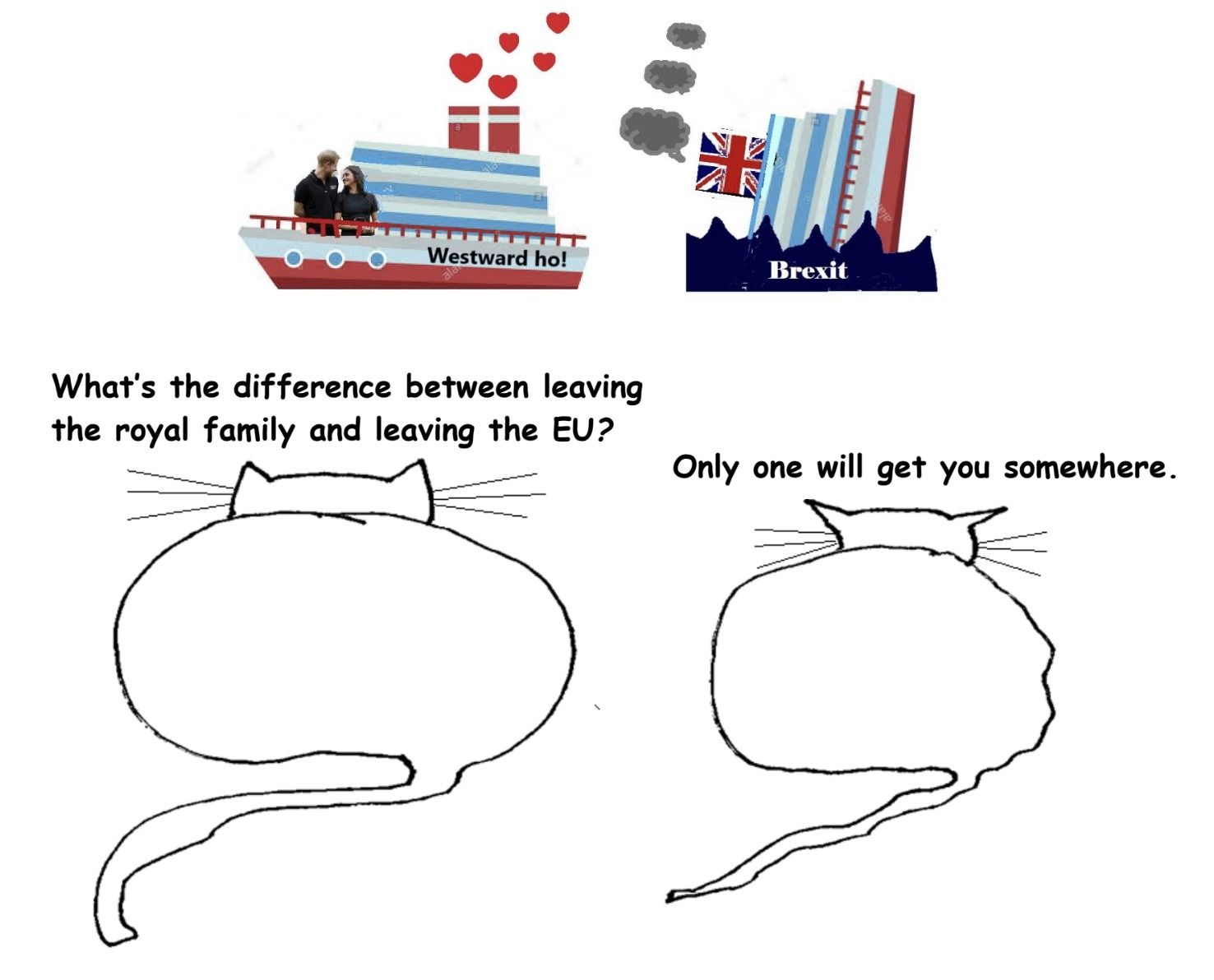
What is the Problem with Wine Metaphors?
by Dwight Furrow
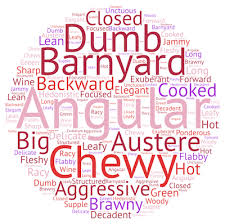 Wine writers, especially those who write wine reviews, are often derided for the flowery, overly imaginative language they use to describe wines. Some of the complainants are consumers baffled by what descriptors such as “brooding” or “flamboyant” might mean. Other complainants are experts who wish wine language had the precision of scientific discourse. The Journal of Wine Economists went so far as to call wine writers “bullshit artists”. (The feeling is mutual.)
Wine writers, especially those who write wine reviews, are often derided for the flowery, overly imaginative language they use to describe wines. Some of the complainants are consumers baffled by what descriptors such as “brooding” or “flamboyant” might mean. Other complainants are experts who wish wine language had the precision of scientific discourse. The Journal of Wine Economists went so far as to call wine writers “bullshit artists”. (The feeling is mutual.)
Even the sommelier-trained author of the bestselling book Cork Dork, Bianca Bosker, has reservations about the accuracy of such language. After taking writers to task for using terms such as “sinewy” and “broad-shouldered” she writes: “It seems possible that what we “taste” in a fine wine isn’t so much its flavor as the qualities of good taste that we hope it will impart to us.” She seems to be suggesting that wine writers just make stuff up to sound impressive.
The general objection is that these descriptors are metaphorical and are therefore too subjective and ambiguous to give readers an accurate, verbal portrayal of the wine. However, these complaints are tilting at windmills. Read more »
Monday Photo
Stuck, Ch. 10. Behold the Sheep: Al Stewart, “Year of the Cat”
by Akim Reinhardt
Stuck is a weekly serial appearing at 3QD every Monday through early April. The Prologue is here. The table of contents with links to previous chapters is here.
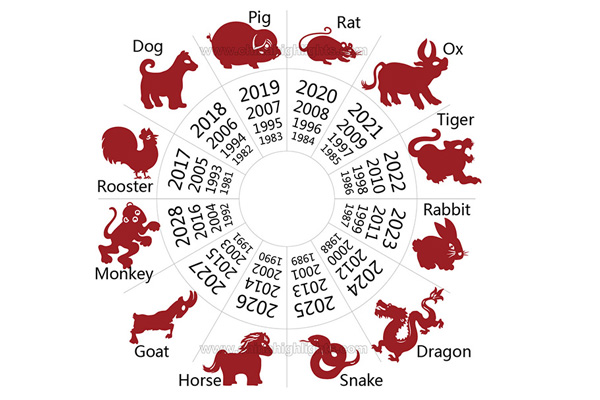 In the Chinese calendar, 2015 was the year of the sheep. I’m a sheep, and I briefly got into it. When you’re a sheep, you gotta own it.
In the Chinese calendar, 2015 was the year of the sheep. I’m a sheep, and I briefly got into it. When you’re a sheep, you gotta own it.
Ain’t no rat gonna cut you no slack.
While singing the praises of sheep and trying to hold my own against dragons, snakes and the like, I made a passing reference to the 1977 pop hit “Year of the Cat” by Al Stewart. Didn’t hear the song, didn’t sing it to myself, didn’t even utter the words. Merely wrote Al Stewart’s “Year of the Cat” in a blog post. And that, apparently, is all it took for the song to get stuck in my head.
Why did “Year of the Cat” trap me with such ease? Possibly because it’s one of the very first songs I ever purchased.
The first two long playing, vinyl record I ever bought were a couple of collections called Music Machine and Stars. It was 1979. I was eleven and a half years old. Both albums were put out by a company called K-Tel.
The brainchild of a Winnipeg, Manitoba knife salesman, K-Tel hit it big in the 1960s by taking to the airwaves and hawking various of odds and ends with an intense but simple “As Seen on TV” sales pitch. They started with all sorts of knives and bladed devices like the Veg-O-Matic and the Dial-O-Matic. It slices, it dices, bla bla bla. Other gadgets that wouldn’t make you bleed soon followed. But during the 1970s, the company was best known for music compilations.
It actually began in 1966 with a record called 25 Great Country Artists Singing their Original Hits. That format, a compilation of hit singles by various artists, was still fairly novel, and K-Tel struck gold when combining it with their high octane TV marketing formula. By the time I picked up my two discs, K-Tel had issued over 500 different albums, mostly collections. Read more »
Monday, January 6, 2020
Writing To Learn, Learning to Live: Against Instrumentality
by Eric J. Weiner
The allure of fresh and true ideas, of free speculation, of artistic vigor, of cultural styles, of intelligence suffused by feeling, and feeling given fiber and outline by intelligence, has not come, and can hardly come, we see now, while our reigning philosophy is an instrumental one. —Randolph Bourne
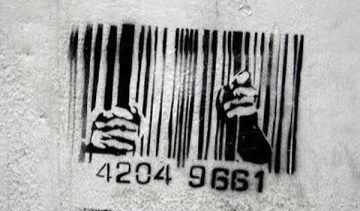 Schoolteachers across the grades are responsible for teaching their students how to write. Their essential pedagogical role is instrumental. With particular attention paid to format, grammar, spelling, and syntax, students ideally learn to write what they know, think, or have learned. It matters little if the student is in a class for “creative writing” or “composition,” writing is taught and practiced as a way to record thoughts, compose ideas in a coherent manner, and clearly communicate information. A student’s writing is then assessed for how well she adhered to these instrumental standards while the teacher is assessed for how well she adhered to the standards of instrumental teaching.
Schoolteachers across the grades are responsible for teaching their students how to write. Their essential pedagogical role is instrumental. With particular attention paid to format, grammar, spelling, and syntax, students ideally learn to write what they know, think, or have learned. It matters little if the student is in a class for “creative writing” or “composition,” writing is taught and practiced as a way to record thoughts, compose ideas in a coherent manner, and clearly communicate information. A student’s writing is then assessed for how well she adhered to these instrumental standards while the teacher is assessed for how well she adhered to the standards of instrumental teaching.
By contrast, writing to learn re-conceptualizes our relationship to writing from measurable outcomes to critical/creative processes. It moves the epistemological needle from instrumentality to exploration, innovation, imagination, and discovery. Writing to learn supports the development of what Randolph Bourne (1917) called “poetic vision.” Having poetic vision diverts our “creative intelligence” away from “the machinery of life” and redirects our “creative desires” toward enhancing the quality of life. “It is the creative desire,” Bourne writes, “…that we shall need if we are ever to fly” (from Twilight of Idols). Read more »
What Makes Manners Matter?
by John Schwenkler

What is the point of being courteous, kind, and otherwise well-mannered?
I suspect that most of us are inclined toward an answer that parallels Thrasymachus’ view of justice in the early books of Plato’s Republic. For Thrasymachus, what really matters to us where questions of justice are concerned is all on the side of self-interest. We care about justice in others only to the extent that it brings benefits to us and our friends, and we care about embodying justice in our own lives only to the extent that justice wins us friends, while unjust action carries the risk of punishment and social sanction. The attractiveness of this view comes out in Plato’s famous retelling of the myth of Gyges: given the power to act either justly or unjustly without being detected by others, any of us would choose the life of total injustice. In themselves, the demands of justice are at odds with the desires of naked self-interest, and the only thing that motivates us to respect them is the fear of what will happen to us if we don’t.
An analysis along these lines is even more attractive in connection with the traditional demands of courtesy. Many of us will have the sense that there is — or at least could be — something objectively, universally wrong with stealing, lying, murdering, or imprisoning a person without proper cause. By contrast, no such status accrues to the demand to wear a collared shirt to work or put a napkin on one’s lap while eating: customs like these are contingent, local practices a large part of whose purpose is to mark off the one who observes them as a member of polite society. Meanwhile, even those aspects of good manners whose justification seems more fundamental, such as keeping disparaging thoughts to oneself and refraining from interrupting one’s conversational partners, are all such as to be dispensable in certain situations. What force do they have, then, except as the impositions of an oppressive, socially stratified culture? Read more »
Perceptions
The Killing of Qassem Soleimani and Drone Proof Cities
by Leanne Ogasawara
 1.
1.
It was at the height of Obama’s massive acceleration of George W’s drone program, when city planner Asher J Kohn began imagining his drone-proof “Shura City.” He did this, he said, “Out of the realization that the law had no response to drone warfare.” And so he came up with his concept of Shura City, ostensibly in the hope that by rendering military drones less efficient for “apprehending” targets in the Middle East, the US would be forced to return to police actions under international law.
The reaper drone that carried out the killing of Iranian general Qassem Soleimani on January 2 was part of a military program that had its origins in the pilotless hot-air balloons the Austrians used to bomb Venice in the late 19th century, as well as experimental remote control airplanes developed in the First World War. But, in terms of application and ethical issues, they are mainly seen as an extension of the aerial bombing campaigns of WWII.
Aerial bombing was a game changer in war: no longer would the world watch as two armies faced off on a battlefield–for the future was of indiscriminate bombing of cities from above. The line between combatant and non-combatants was effectively blurred forever with aerial bombing –and, not surprisingly, civilian deaths skyrocketed.
When viewed from this history, targeted drone strikes seem a natural and more efficient way to kill an enemy. Read more »
An Utterly Biased Guide To Impeachment
by Michael Liss
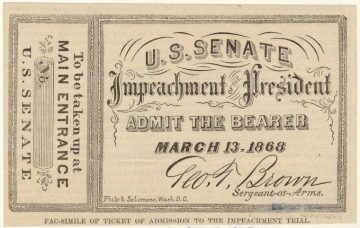 I have an awful confession to make. I haven’t made up my mind about whether President Trump should be convicted and removed from office.
I have an awful confession to make. I haven’t made up my mind about whether President Trump should be convicted and removed from office.
I know that sounds deranged. I am “troubled” by what Trump apparently did. “Disturbed” by the scorched-earth defense strategy put together by the Trump team. “Deeply concerned” about the continuous violations of norms and the virtual certainty they will continue.
All of these things are true, and I’m not even a moderate Republican trying to show my independence to the folks back home before voting to acquit. I’m a Democrat, and every day of the Trump Regime is an excruciating day. Nothing would make me happier than a landslide repudiation of Trump by a thoroughly repulsed electorate. I want him out, and I believe that, applying a probable cause standard, the House voted appropriately to Impeach and send it to the Senate. Nonetheless, I’m not sure that, if I were a Senator, I would vote to convict.
I need evidence. Old fashioned, I admit, but I need it anyway. I need a credible process with witnesses being called and a case being presented in a formal way. I need a sense that the system actually works, as opposed to just being a two-party rumble where few seem to care about facts, and fewer about process.
Three simple questions: What did the President do? Did he have the authority to do it? And, if so, did he abuse that authority beyond the breaking point? Read more »
The Cancer Questions Project, Part 23: Steven Fruchtman
Dr. Steven Fruchtman is a hematologist with extensive industry experience in clinical research for myelodysplastic syndromes, hematologic malignancies and solid tumors. He is an author of more than 170 lectures, presentations, books, and chapters. Previously, Dr. Fruchtman served as the Director of the Myeloproliferative Disorder Program at Mt. Sinai Hospital in New York City and established the Stem Cell Transplant Program there. Dr. Fruchtman currently serves as President, Chief Executive Officer and Director at Onconova Therapeutics, Inc. in Pennsylvania. He is also on the board of The Bone Marrow Foundation.
Azra Raza, author of The First Cell: And the Human Costs of Pursuing Cancer to the Last, oncologist and professor of medicine at Columbia University, and 3QD editor, decided to speak to more than 20 leading cancer investigators and ask each of them the same five questions listed below. She videotaped the interviews and over the next months we will be posting them here one at a time each Monday. Please keep in mind that Azra and the rest of us at 3QD neither endorse nor oppose any of the answers given by the researchers as part of this project. Their views are their own. One can browse all previous interviews here.
1. We were treating acute myeloid leukemia (AML) with 7+3 (7 days of the drug cytosine arabinoside and 3 days of daunomycin) in 1977. We are still doing the same in 2019. What is the best way forward to change it by 2028?
2. There are 3.5 million papers on cancer, 135,000 in 2017 alone. There is a staggering disconnect between great scientific insights and translation to improved therapy. What are we doing wrong?
3. The fact that children respond to the same treatment better than adults seems to suggest that the cancer biology is different and also that the host is different. Since most cancers increase with age, even having good therapy may not matter as the host is decrepit. Solution?
4. You have great knowledge and experience in the field. If you were given limitless resources to plan a cure for cancer, what will you do?
5. Offering patients with advanced stage non-curable cancer, palliative but toxic treatments is a service or disservice in the current therapeutic landscape?
Coming Soon To A Living Room Near You!
by Rafaël Newman
 When Bob Dylan was awarded the Nobel Prize in Literature in 2016, the poet Nora Gomringer expressed her satisfaction at the recognition thus afforded not only poetry, but in particular songwriting, which she identified as the very wellspring and guarantee of literature, citing in her appraisal such classical forebears as Sappho and Homer. In an article published in the Neue Zürcher Zeitung, Gomringer mocked the conventional Western view of letters, a canon founded on prose and the novel, and now challenged by the award to Bob Dylan: “Literature is serious, it is beautiful, it is a vehicle for the noble and the grand; poetry is for what is light, for the aesthetically beautiful, it can be hermetic or tender, it can tell its story in a ballad and, if especially well made, can invite composers to set it to music…”. But “such categories”, she went on to suggest, “are stumbling blocks and increasingly unsatisfying, since they have ceased to function”, in part because of the Academy’s willingness to step outside its comfort zone and award the prize to a popular “singer/songwriter”.
When Bob Dylan was awarded the Nobel Prize in Literature in 2016, the poet Nora Gomringer expressed her satisfaction at the recognition thus afforded not only poetry, but in particular songwriting, which she identified as the very wellspring and guarantee of literature, citing in her appraisal such classical forebears as Sappho and Homer. In an article published in the Neue Zürcher Zeitung, Gomringer mocked the conventional Western view of letters, a canon founded on prose and the novel, and now challenged by the award to Bob Dylan: “Literature is serious, it is beautiful, it is a vehicle for the noble and the grand; poetry is for what is light, for the aesthetically beautiful, it can be hermetic or tender, it can tell its story in a ballad and, if especially well made, can invite composers to set it to music…”. But “such categories”, she went on to suggest, “are stumbling blocks and increasingly unsatisfying, since they have ceased to function”, in part because of the Academy’s willingness to step outside its comfort zone and award the prize to a popular “singer/songwriter”.
The Nobel Committee, according to Gomringer, had thus acknowledged the primordially hybrid nature of literature, the inextricable relationship between sound and sense, meter and message that had from the outset refused to differentiate between music and verse, but rather had created the two simultaneously, a marriage of the Apollonian and the Dionysian that would be variously contested by purists in subsequent generations, but would never entirely disappear.
The Academy’s own rationale for its choice in 2016, however – that Dylan was distinguished “for having created new poetic expressions within the great American song tradition” – proposes a slightly different account of the intervening literary history, and a different agenda: an existing musical idiom, it suggested, had been revitalized by the advent of a novel lyrical form. Read more »




